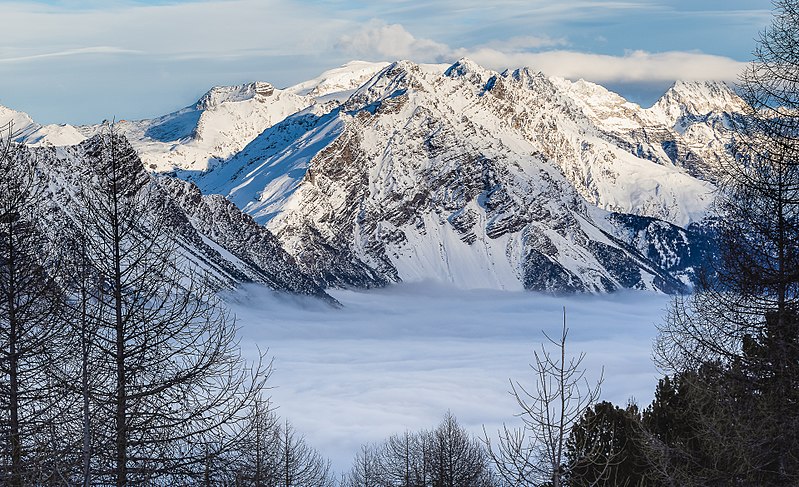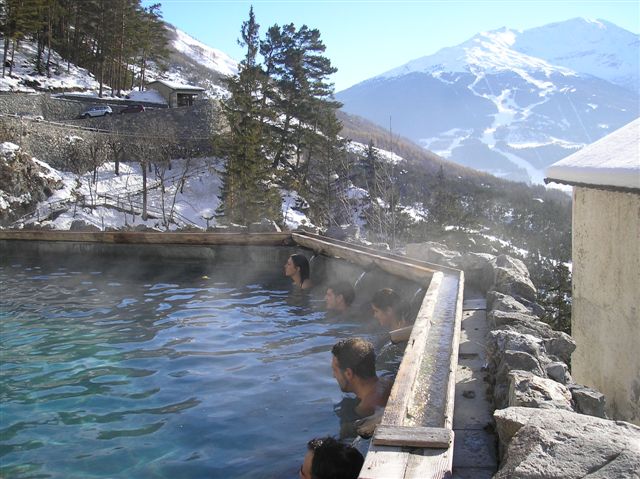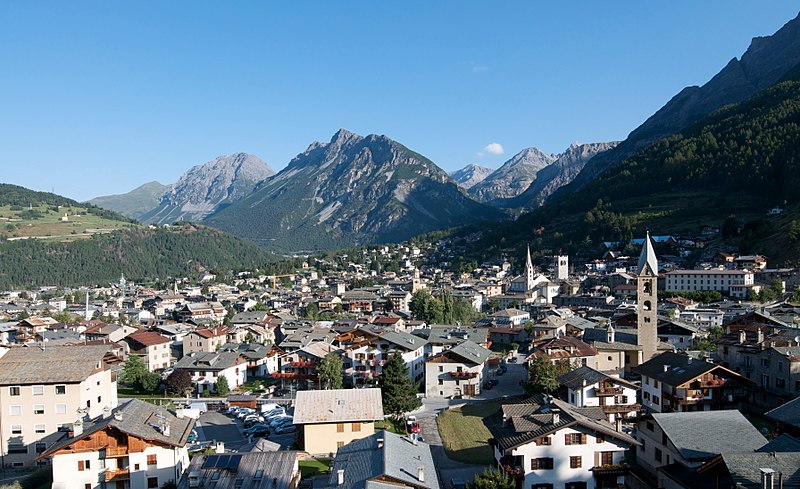A mountain for all seasons. The expectation of the snow, which will transform the Alta Valtellina into a skier’s paradise, can become a precious opportunity to get to know and appreciate the other colors of the Bormio territory, Valdisotto and Valdidentro areas. Not only kilometers of slopes, but also picturesque trails – from the Paluaccio reserve to the itineraries in the Stelvio Park – give perfect opportunities for walks without forgetting the good food and numerous spa treatments. Bormio (1225 meters above sea level), known as the “Magnifica Terra”, owes its fortune to the geographical position, being a strategic corridor for transalpine communications: a wide open door towards Livigno and Switzerland is famous for sports, wellness, as well as shopping, spritz and bombardino (skiers’ drink made of cream, warm zabaglione, brandy and coffee) ideally enjoyed strolling around the fourteenth-century main square dominated by the Bajona tower. With over 50 kilometers of snow-covered slopes, one of the most qualified ski area in the Alps and permanent home of the Alpine Ski World Cup, starting from the famous Stelvio slope where you can even ski even at night, Bormio offers some ancient churches and the residences of the nobles demonstrating the glory of the county, also thanks to the calendar of events (for example the Pasquali) located in the ancient meeting place.

Everything speaks about history here. In the Middle Ages, the Via Imperiale d’Alemagna started From Valdidentro to the northwest of Bormio. It was a road connecting the countries beyond the Alps. In addition to Cima Piazzi (3.439 meters) and its lifts for winter skiing and mountain biking in the summer, the place is full of art and culture. Visit the 15th century church of San Gallo in Premadio, or the church of Santi Martino and Urbano in Pedenosso, already documented in the fourteenth century and rebuilt three centuries later. Admire the two tower rising towards the majestic dam of the Cancanosat and located at the mouth of the Fraele valley. These are the historic observing points used for the defense of Bormio and surroundings.

Don’t miss a chance to immerse yourself in the warm thermal waters of the Bagni Vecchi, a structure overlooking the valley carved in the rock, a Roman establishment, and later a medieval settlement. A little further down enjoy the wellness and pampering offered by Bagni Nuovi, a recently restored grand hotel. The thermal water springs were known since Roman times. Among the great and illustrious visitors of the past there are Leonardo Da Vinci and Ludovico il Moro. The entire area is enclosed in the Stelvio National Park, and offers nice walks with evocatively named attractions, such as the Fonte pliniana, a hot spring already described by Pliny the Elder, located in a fascinating place between the ancient trees and a narrow natural gorge, or the other one, so called “Eye Fountain”.

You can not leave Bormio without visiting the small village of Oga, in Valdisotto, a real mountain cameo at 1,400 meters above sea level, dominated by Forte Venini built 300 meters higher. Accessible by bus, bike, chair lift or reliably Italy car service the fort is worth visiting for the historical testimony as well as for the breathtaking view. Called after Captain Corrado Venini, it was built between 1908 and 1914 to defend the main Alpine passes, in view of the conflict with Austria. This recently restored structure was built in perfect symbiosis with the environment. The restored rooms with many relics and objects found after the military conflict, allows visitors even nowadays to perceive the atrocity of the war. It’s still touching going through the rooms where the soldiers lived: from the pantry to the latrines, from the dorms to the boiler and the powder magazine.
The structure was built at the top of the Dossaccio, according to the military architecture style of the beginning of the century. A thousand tricks made the fort impregnable, like the moat that surrounded it and the barbed wire, while the water tanks would provide the soldiers with autonomy for one month in case of siege. It was exploited during the World War I, while it was not used at all during the World War II. Nevertheless the cannons continued to be oiled until they were put on sale in 1950, and sold as scrap metal. These days the fort hosts visits and events, promoting a “path of peace” associated with the unique “oasis” that surrounds it, the nature reserve of Paluaccio. The place is a peat bog in a process of evolution. It’s a humid environment surrounded by meadows, pastures and forests of pines, larches and birches, one of the few remaining in Italy. Although it has been widely “tampered”, the environment of the bog is still very interesting: it is a refuge of plant species typical for postglacial cold phases, a natural “archive” that, thanks to the analysis of the pollens and carbon trapped in the layers, is very useful for scholars providing important information on the climatic changes over the last millennia.
These days we can walk in this area of 36 hectares total, formed as a bog about 13 thousand years ago using the wooden walkways with educational panels that provide the information about the place and its most rare species, such as the sundew Rotundifolia, a carnivorous plant appeared here thank to the scarcity of nutrients in the subsoil. An excursion to the Paluaccio and the Forte lasts an average of 45 minutes and can be exciting for the whole family. From here you can reach the Alpe di San Colombano (2,227 meters), at the foot of the Masucco Mount, located in a splendid natural amphitheater that dominates the entire Bormio valley, where you can stop to rest and eat. In the Valtellina safe houses are always happy to offer polenta, sciatt, pizzoccheri, bresaola, a glass of wine for those arriving.